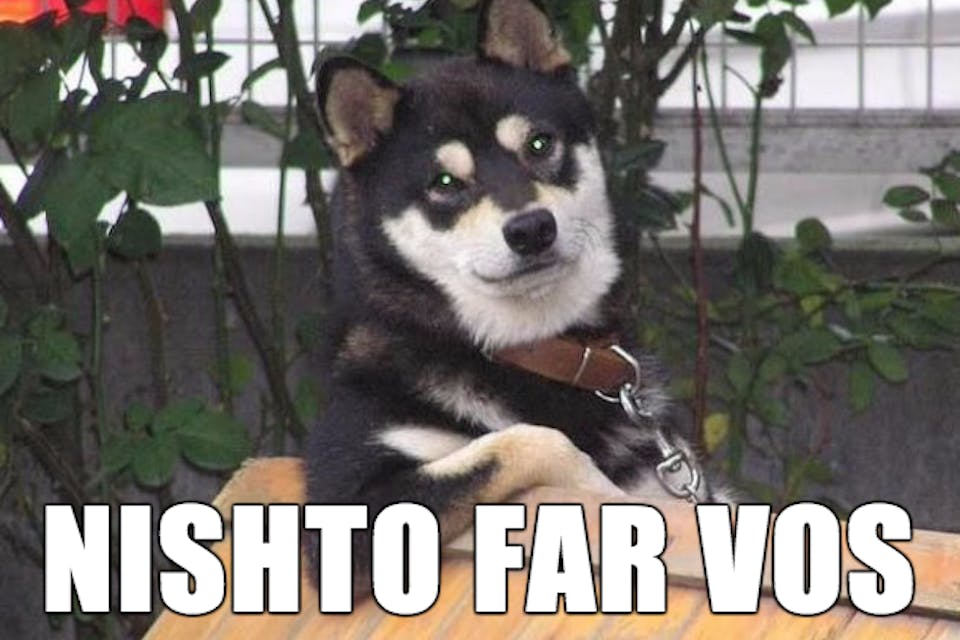
April 30, 2015
How to Say You’re Welcome in Yiddish and Other Languages
And why we say it at all.
Mosaic reader Paul Socken writes to ask: “How do you say ‘You’re welcome’ in Yiddish?”
There are a number of ways to say “You’re welcome” in Yiddish, just as there are in English (in which, depending on the situation and speaker, one has such additional options as ” My pleasure,” “Don’t mention it,” “Think nothing of it,” “Any time,” “Forget it,” and “No problem,” let alone the ungrammatical but widespread “You welcome”). Probably the most common of these is nishto far vos, literally, “There’s nothing for which,” i.e., “There’s nothing to thank me for.”
Nishto far vos was not originally indigenous to Yiddish, which is probably why my friend Ruth Wisse, the scholar and critic of Yiddish literature, writes me that even though she uses it in Yiddish conversation, she finds it “not very couth.” It entered the language, most likely sometime early in the last century, as a translation of an idiom found in a number of European tongues, such as French il n’y a pas de quoi, Spanish no hay de qué, Russian ne za chto, Polish nie ma za co, and so on. This is no reason, however, to challenge its Yiddish credentials. Although it was probably borrowed from Polish or Russian, the Poles and Russians took their versions of it from French, which quite rightly didn’t bother them at all. Linguistic borrowing is a universal phenomenon for which there’s no need to ask permission or apologize.